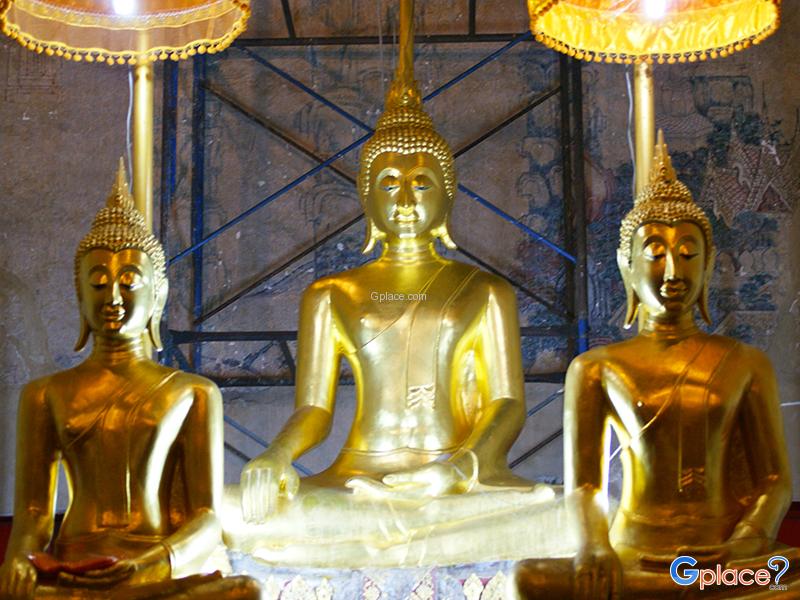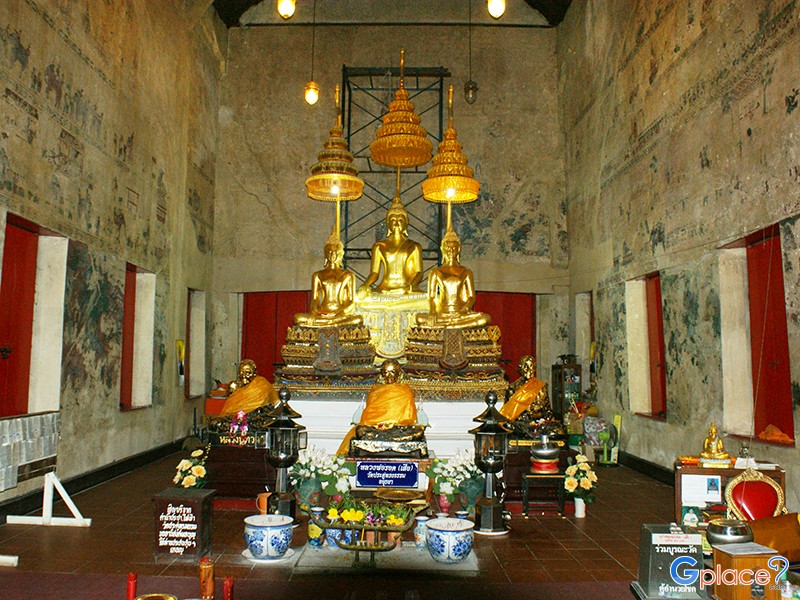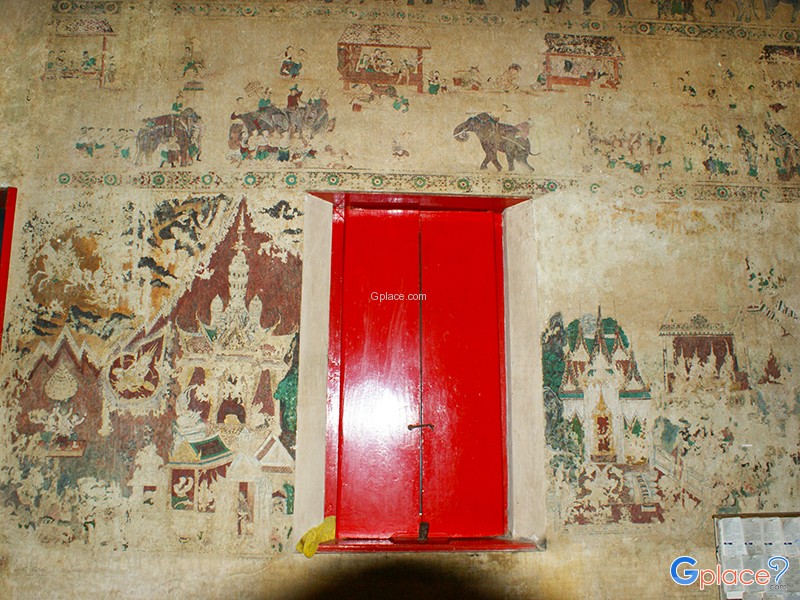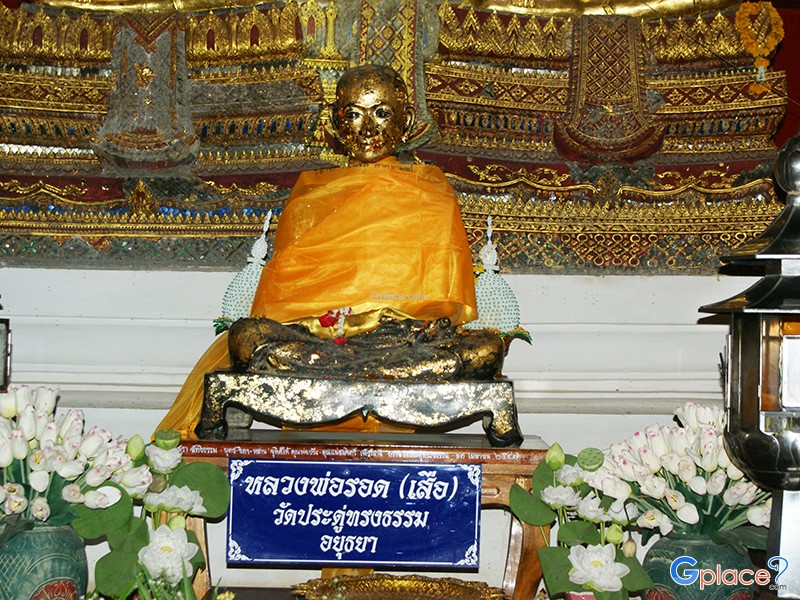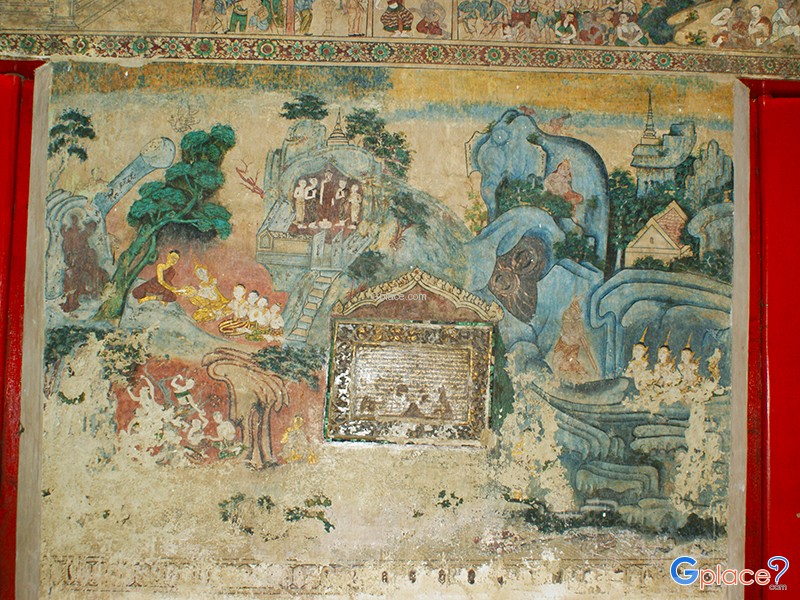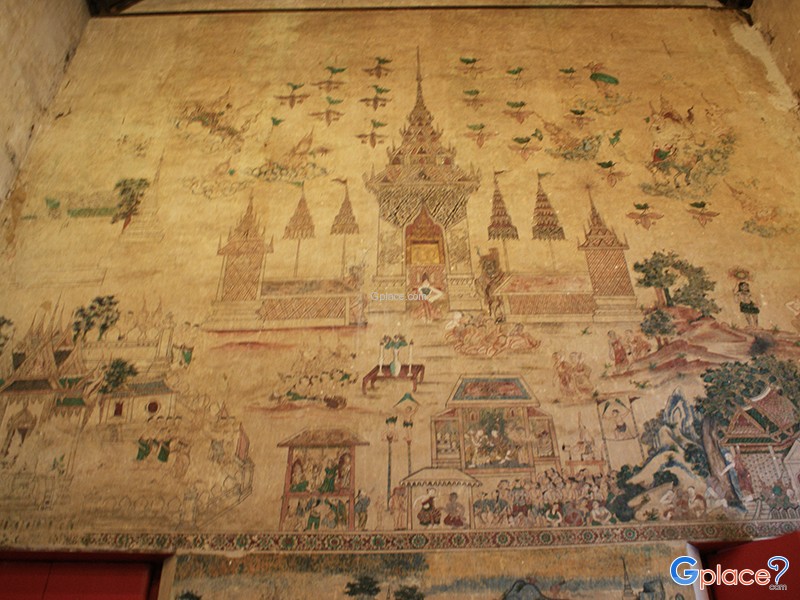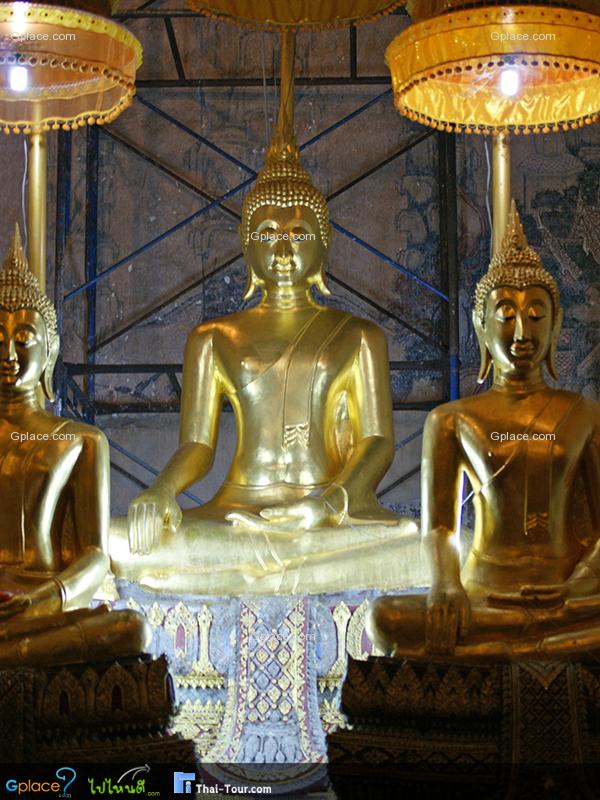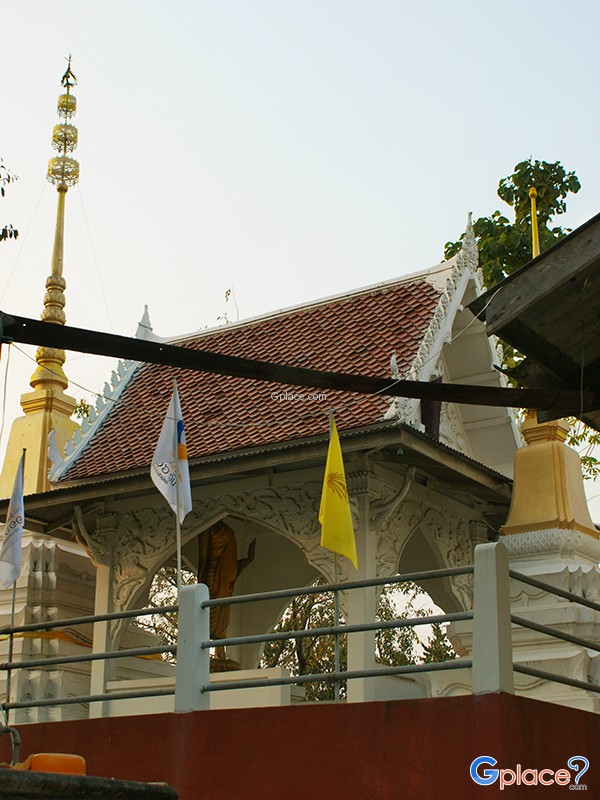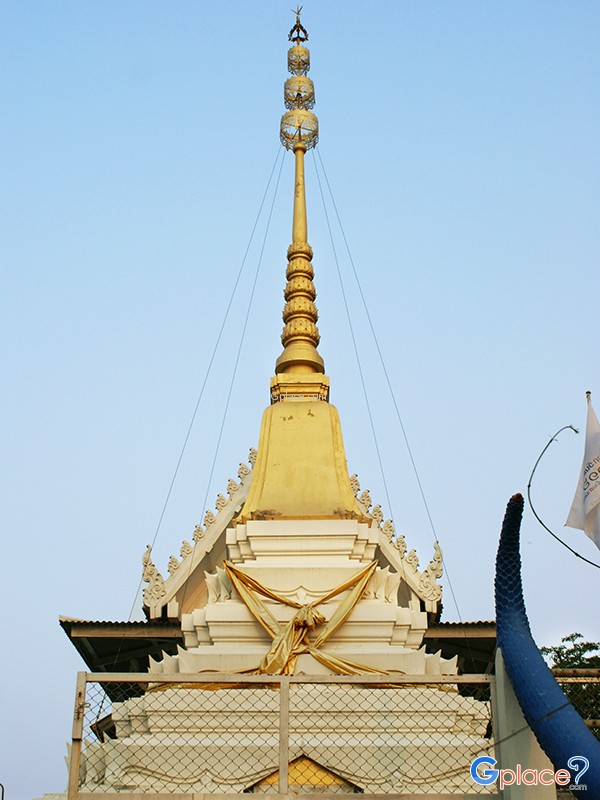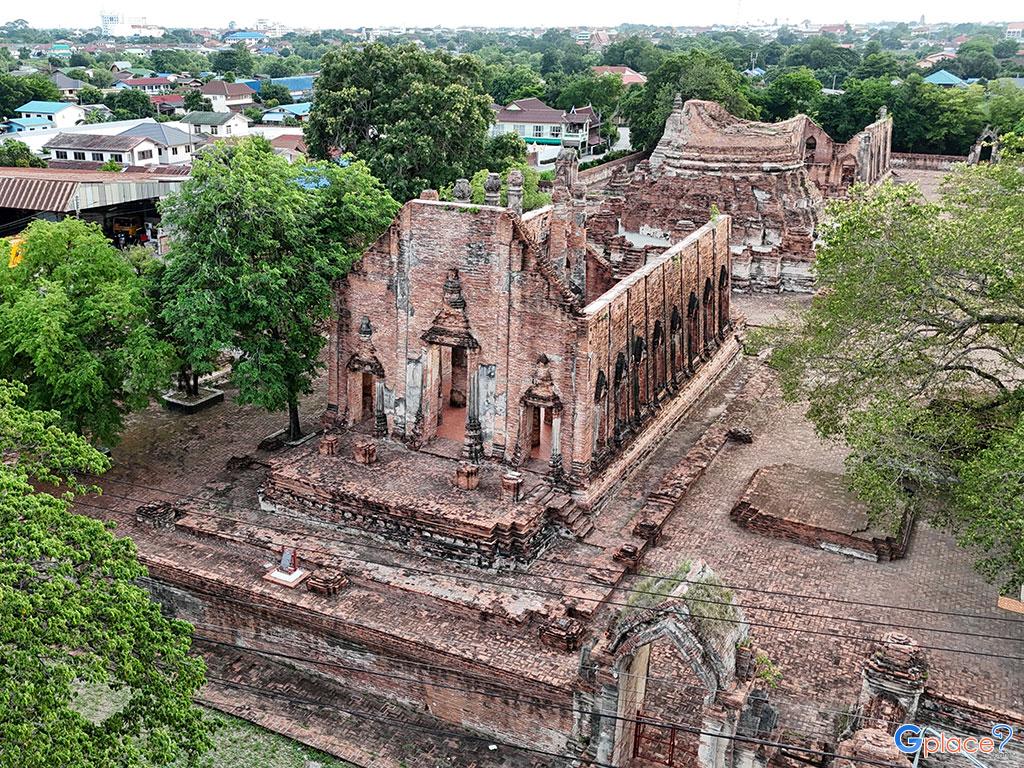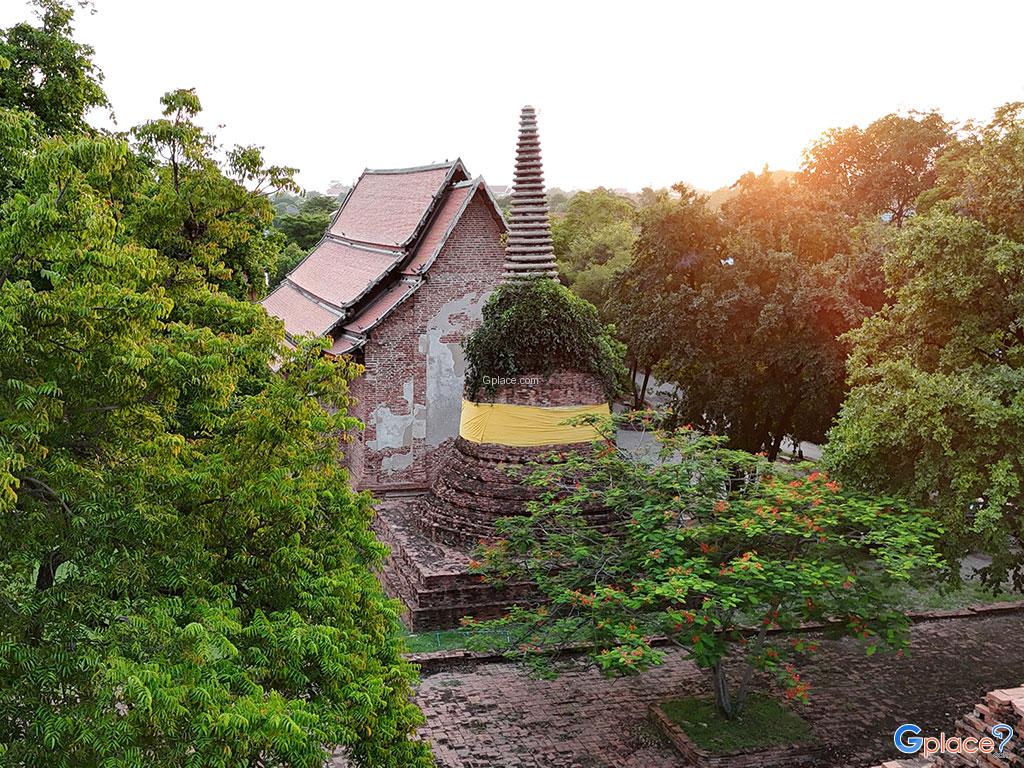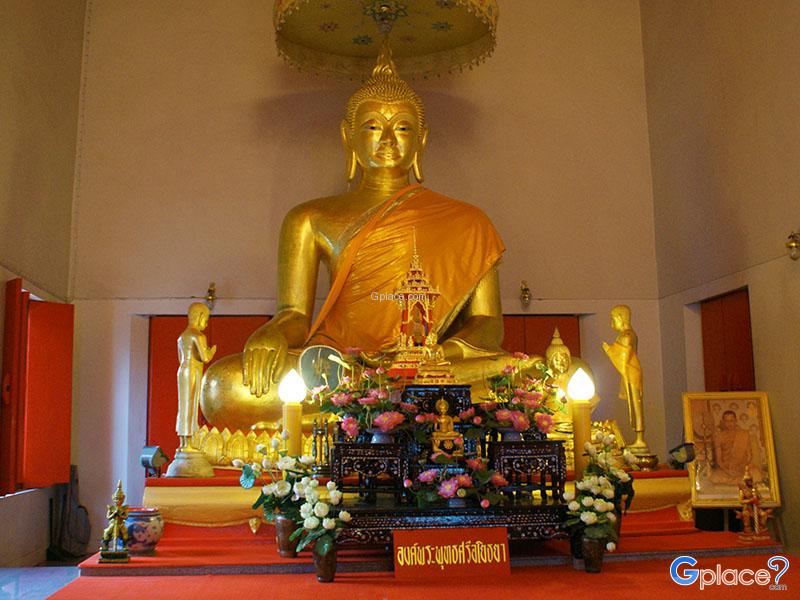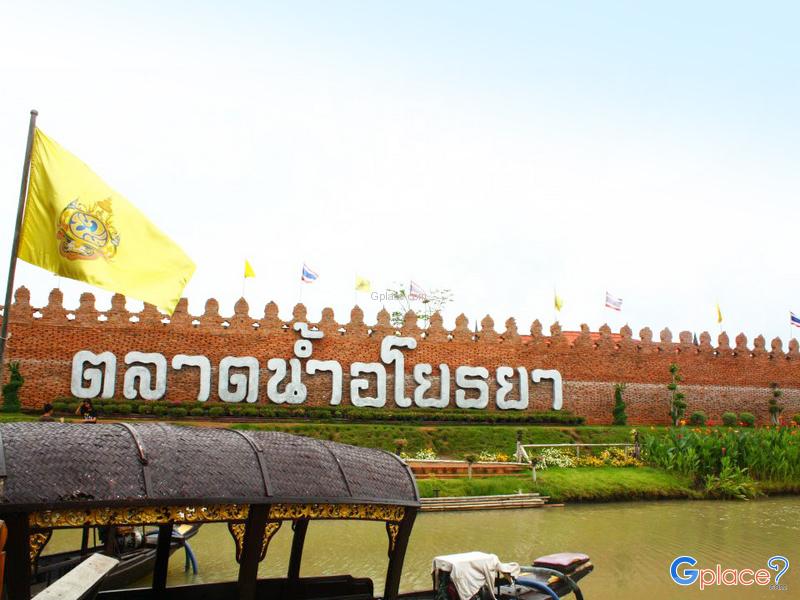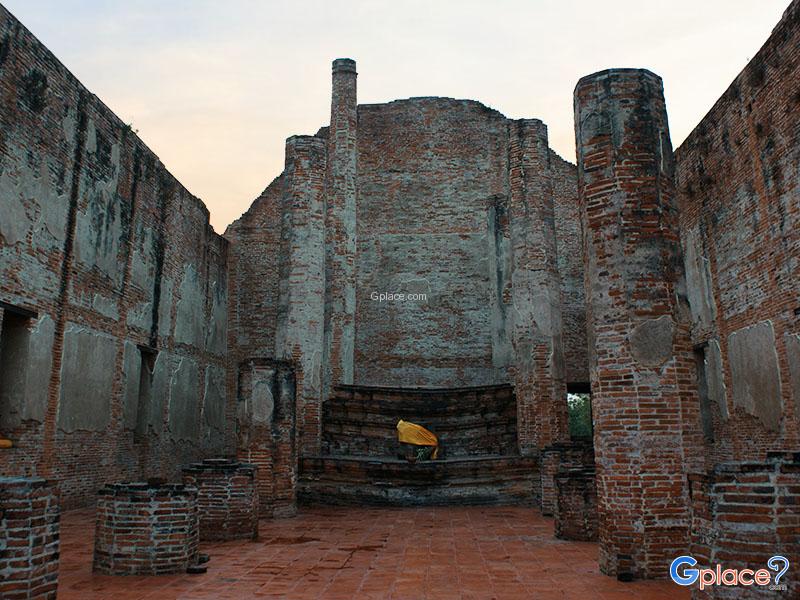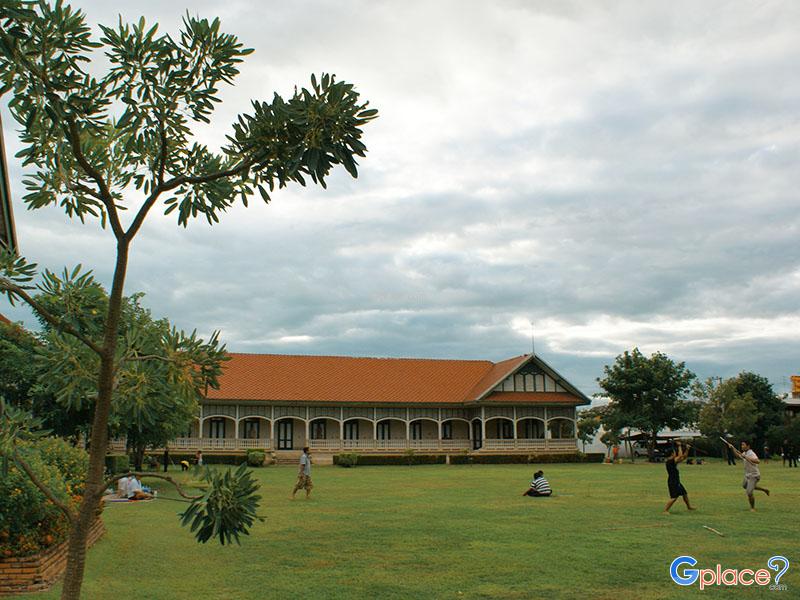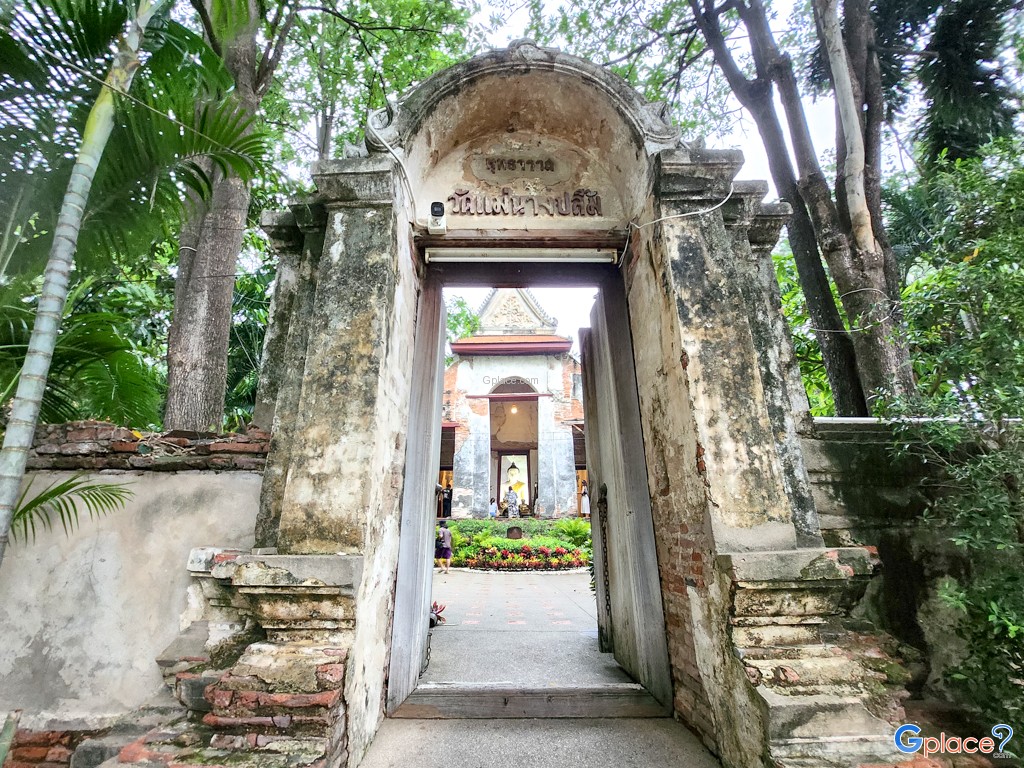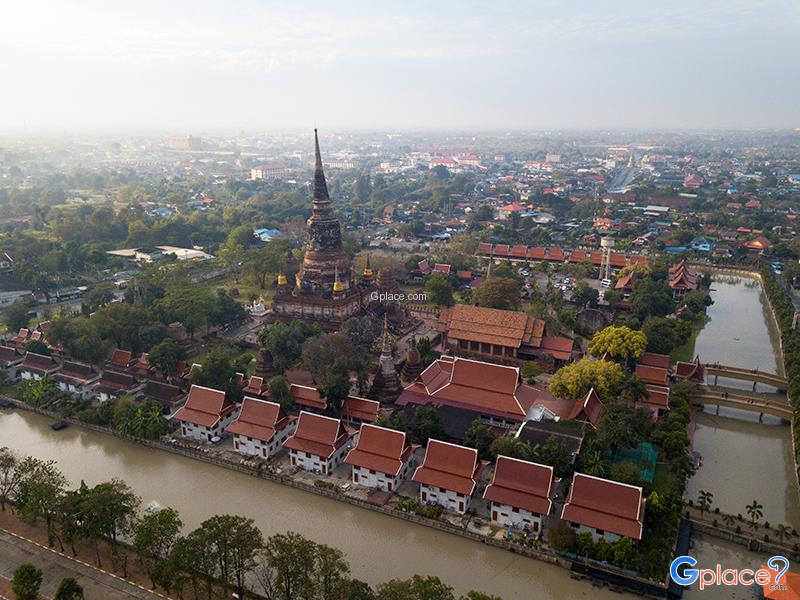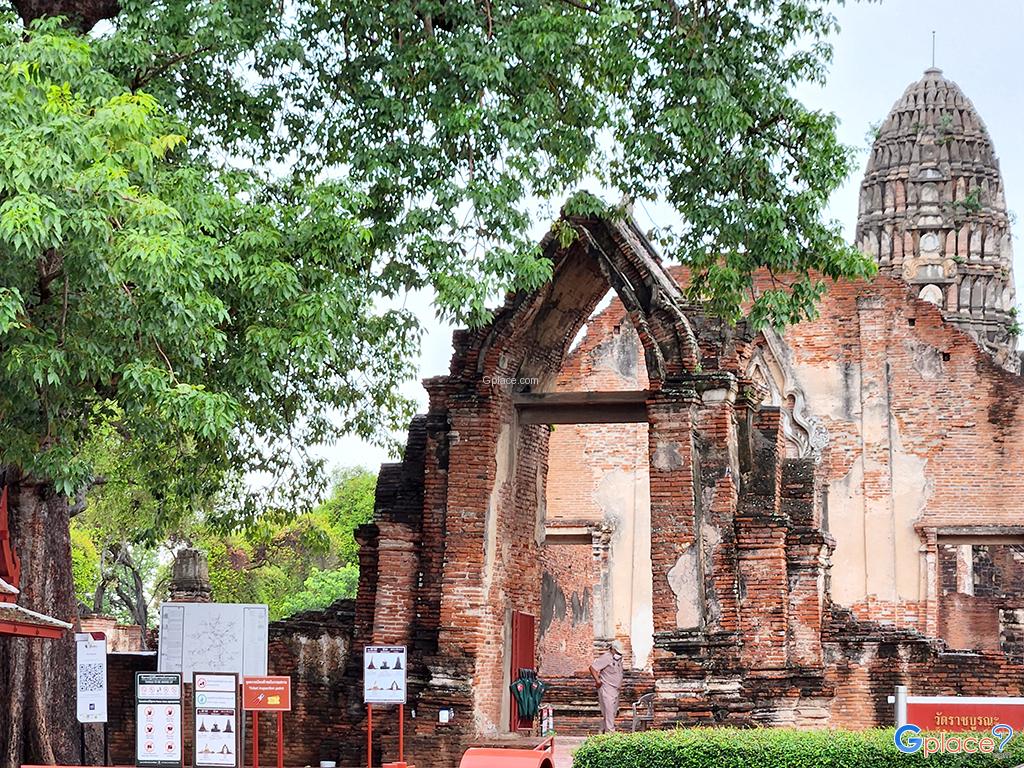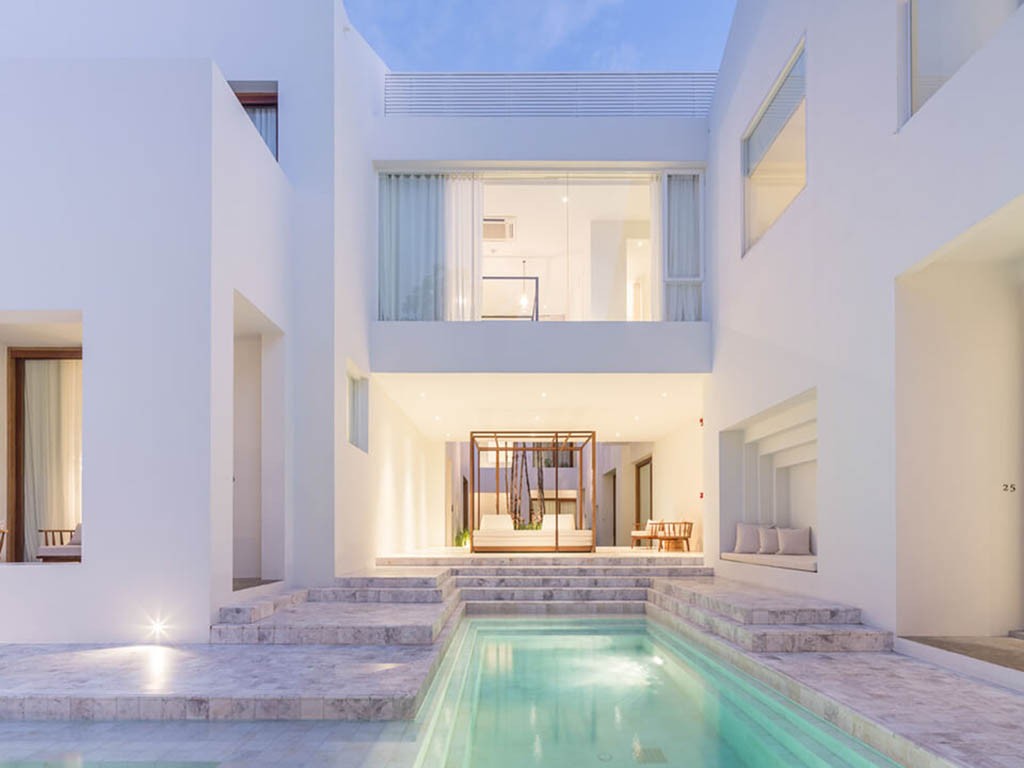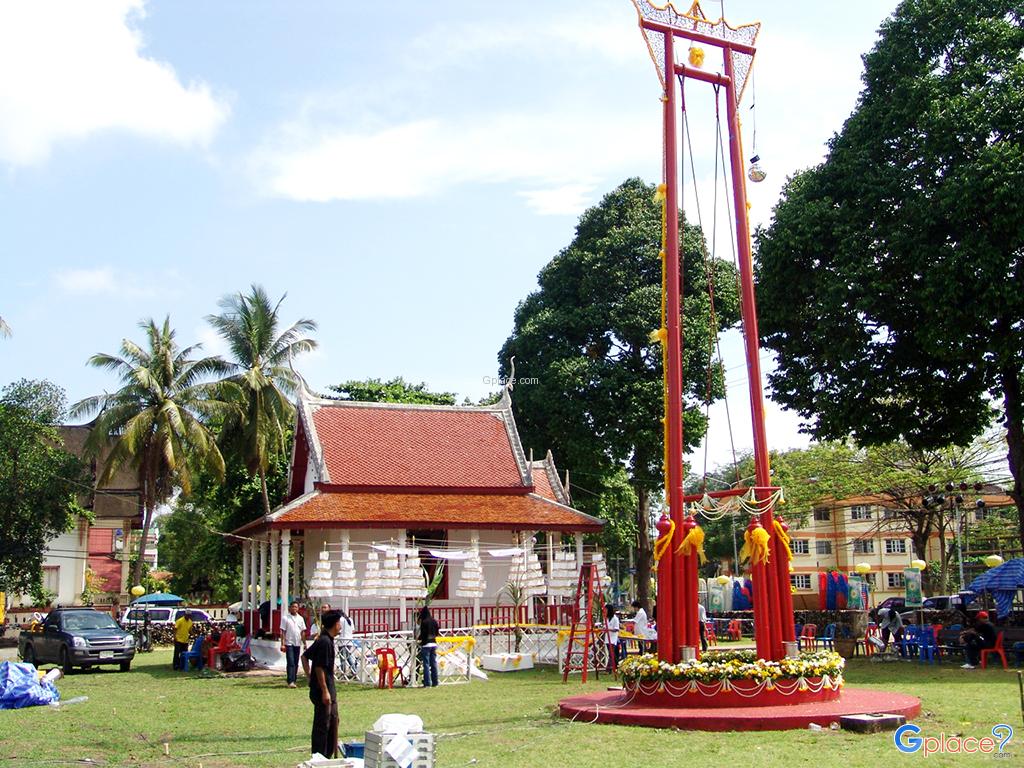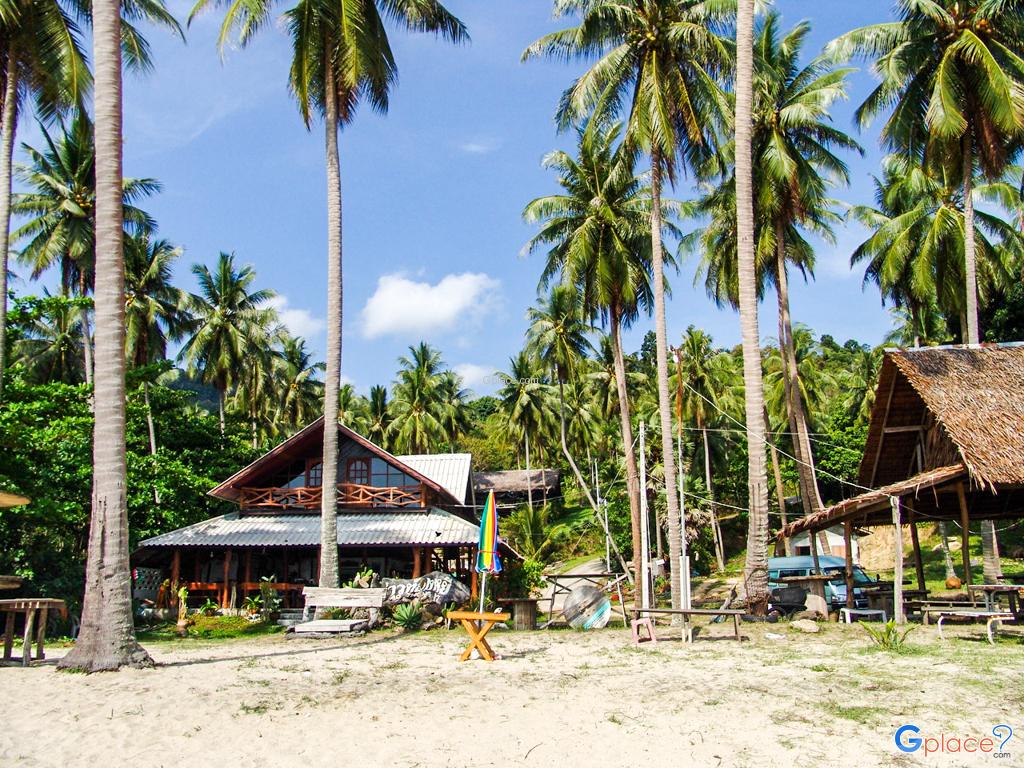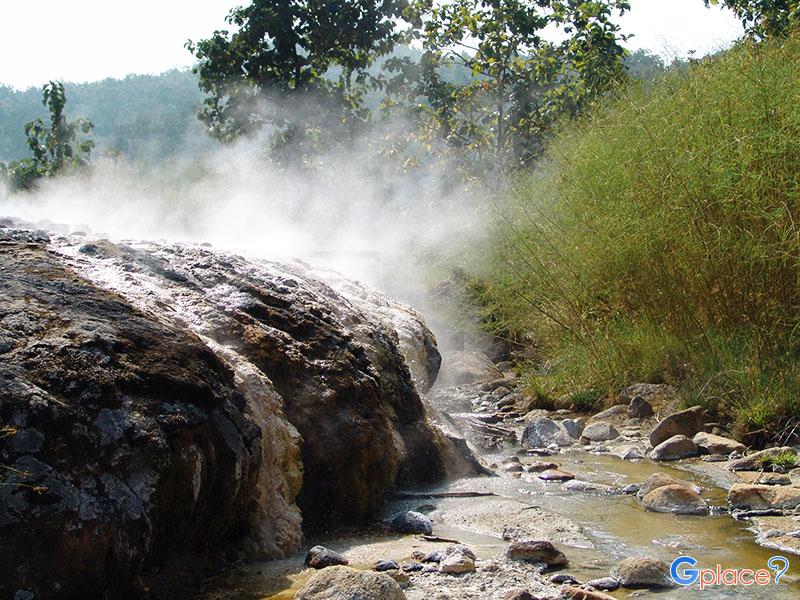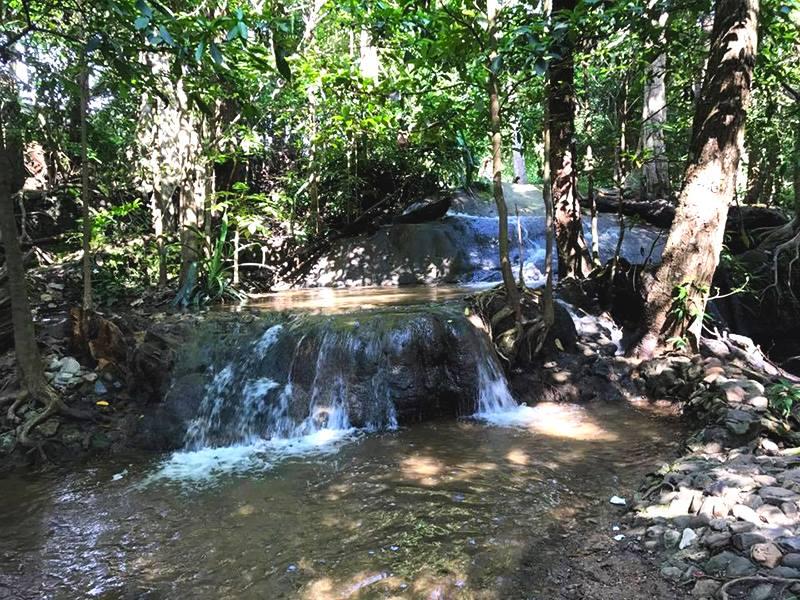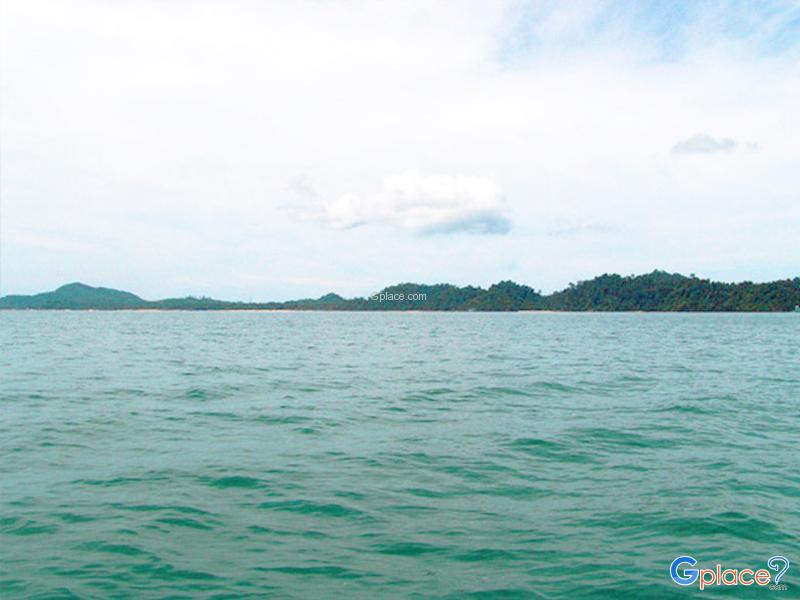“The ubosot of the Ayutthaya period, renovated around the reign of King Rama IV, has murals telling stories. Tenjat Jataka Buddha's history, image of the royal procession, way of life”
Wat Pradu Songtham is located off the city center in the northeastern part of the city. It is situated on a small road that runs west from Wat Kudi Dao. I came across this temple after taking photograph Wat Kudi Dao on 25 Jan 2552. So it may be difficult for you to find.
Wat Pradu Songtham is situated in a part of the city known as Ayodhaya. It is widely believed that an ancient settlement existed here before King U-Thong established Ayutthaya in 1351. An east/west aligned canal once led from the Pa Sak River to Wat Pradu Songtham. This canal is listed as Khlong Pradu Songtham on modern maps. It was once connected to an important north/south aligned canal known as Khlong Ayodaya (or sometimes as Khlong Kudi Dao). Khlong Pradu Songtham has been buried for the most part to create a road for motor vehicles and to build tracks for the railway. As a consequence, a large pond has formed on the premises of the monastery.
As an active temple, Wat Pradu Songtham has most of the usual structures found at a Buddhist monastery. A sermon hall, bell tower, and monk's quarters are in situ. Most of these are designed in a style reflecting the Bangkok period. Curiously, the one architectural structure that is missing is a chedi. It is assumed to have been destroyed over the years. The central feature of this monastery is its mural-decorated ordination hall.
The murals at Wat Pradu Songtham were painted in 1863 (Garnier 178). These have greatly deteriorated, but they still provide remarkable images of the lives of Buddha (Jataka) and Siamese culture during the Ayutthaya period. Scenes graphically depict Chinese acrobats, tightrope walkers, ascetics sleeping on a bed of knives, sinners being tortured, and the fashions during the Ayutthaya period. However, the most remarkable murals in the ordination hall are the ones portraying Royal processions with a large number of elephants. Derick Garnier points out that murals at Wat Pradu Songtham probably show the delivery of robes to the clergy during the Kathin ceremony, and that King Uthumphon most likely presented robes to monks at this monastery since he had ordained here (Garnier 51).
In 1985, the Muang Boran Publishing House released entire books about the murals at Wat Pradu Songtham and Wat Yom (a nearby monastery). The murals at both monasteries are viewed as artistically connected due to execution techniques including the linear depiction and color application. Phraya Boran Rachathanin had the murals at Wat Yom copied on a Khoi manuscript in 1897. Prince Damrong made another copy of the royal processions from the murals in 1918, which is preserved in Thailand's National Archives. There is evidence that Wat Pradu Songtham's murals have several layers (as many as ten). New paintings were drawn over previous murals as they had deteriorated. The renovations in later times might have caused some damage to the older paintings. The murals at Wat Yom are no longer available, but the ones at Wat Pradu Songtham are still accessible by anyone willing to visit the monastery. The Fine Arts Department closely followed these mural paintings to revive the procession for the 1984 Ayutthaya Festival.
The National Museum of Thailand, located in Bangkok, has an ancient Buddha image on display that was taken from this monastery. The exquisitely carved sandstone image dates to the 9th-10th century Dvaravati Period. The Buddha is sheltered by seven Naga as he sits on a pedestal above the sun-eating Rahu. He is flanked by to human-like images on each side.
Wat Pradu Songtham played an important role in the city's history. Royal Chronicles first mention it in context of a rebellion by Japanese merchants in Ayutthaya. Many Japanese boats had started to conduct trade in the city, and these merchants were angered by their treatment once King Songtham took the throne (c.1610), especially after the King ordered the execution of one of their leaders. About 500 Japanese joined with Phra Phimon and marched to the imperial plaza to kill the newly crowned king. However, eight holy monks from the Monastery of the Pradu Tree rescued the king and escorted him away in front of the Japanese. The Japanese were then attacked by Phra Maha Ammat - the future King Prasat Thong - and his troops. The Japanese were killed in great numbers before they could board their junks and flee the city. In reward for ousting the rebellious Japanese, Phra Maha Ammat was appointed with the title Chaophraya Kalahom Suriyawong and a royal proclamation was made to present food and alms to monks at Wat Pradu Songtham on a standing basis (Cushman 208-209). Thus, Wat Pradu Songtham was formally recognized by Royal patronage, which continued into the next dynasty.
Dutch merchant Jeremias Van Vliet reported on this event with a slightly different interpretation. The Japanese merchants had enjoyed great profits from the sale of deer skin (also sapan wood), but as their pride and imprudence grew, they dared to attack the palace and seize the king in his own room. They did not free the king until he promised to forget the harm they had done him and to take the Japanese soldiers into his service as bodyguards for the rest of his life (Baker 136-137). Van Vliet makes no mention of Wat Pradu Songtham.
Wat Pradu Songtham is also mentioned in the Royal Chronicles in relation to an important event occurring in 1758. When King Borommakot died earlier that year, a violent conflict ignited over who would be next in line to the throne. King Uthumphon eventually seized the crown, which caused many to fear that a civil war might erupt. Five revered high-ranking monks tried to avert the Kingdom's political division by pressing for a peaceful solution at a site within the Royal Palace. As a result, King Uthumphon abdicated the throne to enter the monkhood at Wat Pradu Songtham only reigning for a total of ten days. He boarded a holy throne branch barge and went in procession in military formation to his old monastery (Monastery of the Tent), and then His Majesty went to live at the Monastery of the Pradu Tree (Cushman 467). His elder brother was then crowned King Suriyamarin (Ekathat).
While Uthumphon was still a monk at Wat Pradu Songtham, a rebellion was planned by Prince Krom Mun Thepphiphit and four nobles (Chaophraya Aphai Racha, Phraya Yommarat, the Phraya of Phetburi, and Master Cui). They went to this monastery, prostrated themselves to Uthumphon, and informed him of their plans. The former king told them that it was improper for him to consider such affairs as an ascetic. However, the next day Uthumphon visited his younger brother, King Suriyamarin, and warned him of the upcoming rebellion - and asking that the rebels' lives be spared. As a result the four nobles were captured, flogged, and imprisoned. Prince Krom Mun Thepphiphit fled from the Monastery of the Tent and escaped into monkhood at Wat Phanan Choeng later to be exiled to Sri Lanka.
Taking advantage of Siamese political chaos, Burmese armies invaded Siam once again and Ayutthaya was forced to prepare for war. Various nobles and imperial subjects visited the former King at the Monastery of the Pradu Tree to persuade him to leave monkhood to prepare the city's defense. Fearing that the city would be lost to the enemy and having compassion on the city's residents, Umthumphon gave up his ascetic life at this monastery (Cushman 479). However, only a short time later, the former King chose to return. He went in a holy royal procession to the Monastery of the Fig of the Pure Gold Spray to enter the monkhood and then came back to live at the Monastery of the Pradu Tree once again (Cushman 487).
As Burmese troops victorious moved closer to the capital city, all of the holy clerics of the Royal Synod were invited to live at monasteries within the city walls. Uthumphon departed from the Monastery of the Pradu Tree to live at the Monastery of the Royal Foundation. While here, nobles and citizens tried to persuade him to leave monkhood one more time in order to protect the city. They wrote pleading messages, wrapped them up, and placed them in his alms bowls (Cushman 505). Despite receiving a great number of messages each day, the former King decided to remain a monk. Burmese armies eventually conquered Ayutthaya on April 7, 1767, and destroyed the city. King Suriyamarin died in the process. The Burmese defrocked thumphon and he became a common layman (Cushman 523). He was then shackled and led over the hills to Burma, where he ended his days recounting the past glories of the Kings of Ayutthaya (Garnier 139).
Wat Pradu Songtham enjoyed Royal patronage from the reign of King Songtham(r.1610-1628) to the fall of the city in 1767. During this time, this monastery had acquired significant wealth and a number of valuable artifacts. After the fall of Ayutthaya, Phraya Taksin needed to finance his expensive fight against the Burmese, so he sent expeditions to Ayutthaya to track down hidden treasures. A large number of earthen jars full of silver were taken from Wat Pradu Songtham. In addition, three boats were needed to haul away all the gold and precious metals from Wat Bhuddhaisawan.
All reviews
(List 1 review)รีวิวเมื่อ 4 เม.ย. 58
beste nike http://www.maxschoenenamsterdam.com/





